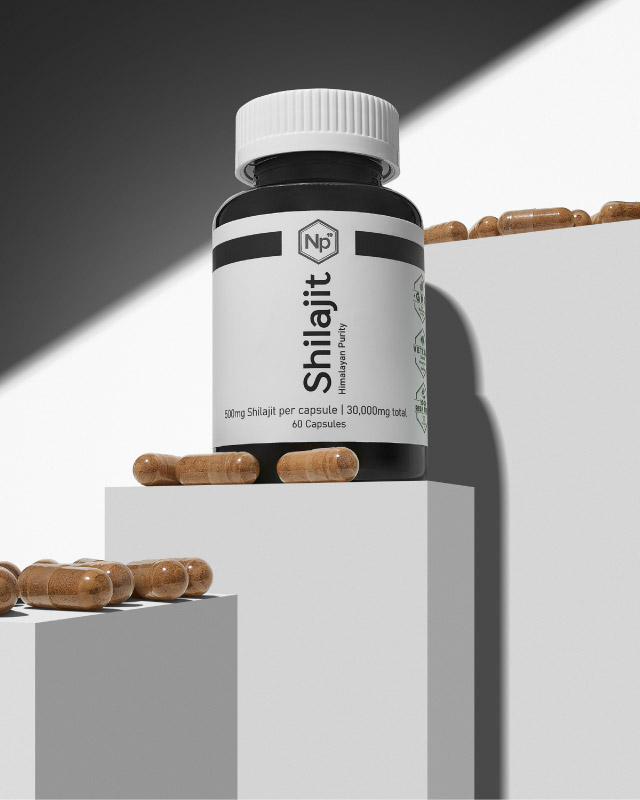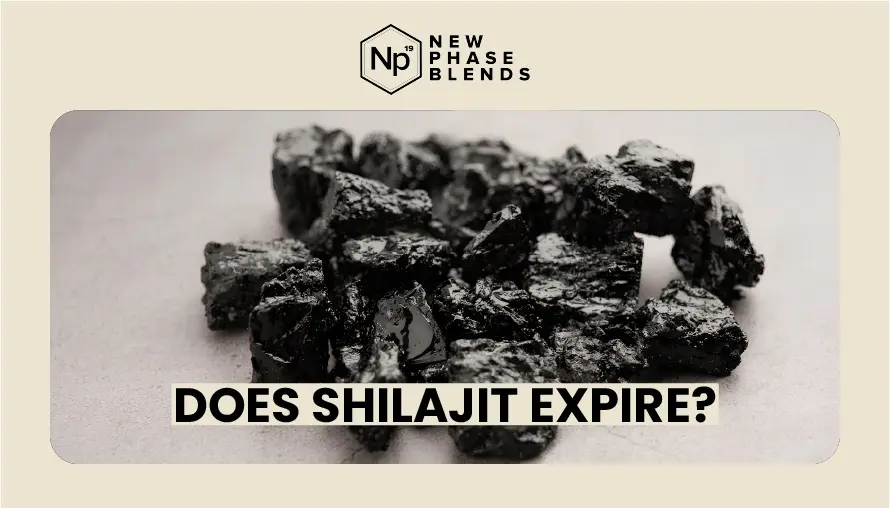Have you recently purchased a shilajit product only to wonder if it might go bad before you use it all? You’re not alone. Many first-time users are concerned about the shelf life of this ancient Ayurvedic substance and how to properly store it to maintain its potency.
In this comprehensive guide, you’ll discover exactly how long shilajit lasts in various forms, the telltale signs of expiration, and the best storage methods to maximize shelf life for each product type. We’ve researched and used various shilajit products for years and will share practical insights to help you get the most value from your purchase.
Understanding Shilajit Shelf Life: The Basics
Contrary to common belief, shilajit does indeed expire, though its shelf life varies significantly depending on the product form, quality, and storage conditions. This natural substance, formed over centuries in mountain regions, contains a complex mixture of minerals, fulvic acid, and organic compounds that can degrade over time when exposed to certain environmental factors.

What Affects Shilajit’s Expiration Timeline?
Several key factors determine how long your shilajit will last:
- Product Form: Liquid extracts typically have shorter shelf lives than resin or capsules
- Processing Method: Traditionally purified shilajit often lasts longer than heavily processed commercial variants
- Storage Conditions: Temperature, humidity, and exposure to air dramatically impact longevity
- Preservatives: Some commercial products contain additives that extend shelf life
When properly stored, high-quality shilajit products can maintain their potency anywhere from 2-3 years for liquid extracts to over 5 years for properly stored resin.
How to Identify Expired Shilajit: Warning Signs
In a perfect world, you would never have an expired shilajit supplement because you would have consumed it all before it goes bad. As we all know, this isn’t always the case. Sometimes products have sat on the shelf for a while, and before you know it, they’ve expired. To prevent yourself from taking expired shilajit, the best thing to do is to identify an expired shilajit supplement before you consume it.
Here are some of the warning signs that your shilajit may have expired:
Visual Changes
Premium shilajit resin typically has a dark, glossy appearance. If you notice a dull, chalky texture or unusual discoloration (particularly whitish or greenish patches), these may indicate degradation or contamination.
Scent Transformation
Fresh shilajit has a distinctive earthy, slightly bitter smell. An overly sour or rancid odor suggests oxidation has occurred, diminishing the product’s beneficial properties.
Texture Alterations
For resin products, excessive hardening or crumbling may indicate moisture loss, while unusual stickiness or softening often signals improper storage in humid conditions.
Diminished Effects
Perhaps the most telling sign is a noticeable reduction in the expected benefits. If your shilajit no longer provides the energy boost, mental clarity, or other effects you previously experienced, it may have lost potency.
Storage Guidelines of Shilajit by Product Form
We’ve developed some simple guidelines to help you better understand how to store your shilajit supplements. Shilajit is not exactly hard to store, but each form of shilajit requires specific storage approaches to maximize shelf life.
Let’s examine the best practices for each type:
Shilajit Resin: The Traditional Form
Shilajit resin, the most traditional and potent form, typically lasts 3-5 years when stored properly. To maintain its quality:
Optimal Storage Method: Store resin in an airtight, amber glass container away from direct sunlight. Keep in a cool, dry place with temperatures between 40-70°F (4-21°C). The refrigerator works well, but allow the resin to reach room temperature before opening to prevent moisture condensation.
Common Mistakes to Avoid: Leaving the container open for extended periods exposes the resin to air and humidity, accelerating oxidation. Similarly, storing near heat sources or in bathroom cabinets where humidity fluctuates can significantly reduce shelf life.
Shilajit Capsules and Tablets: Convenience and Stability
Encapsulated or tablet forms generally have a shelf life of 2-3 years, though manufacturer recommendations may vary.
Optimal Storage Method: Keep bottles tightly sealed in a cool, dry place. If the original packaging includes a desiccant packet, keep it in the container to absorb moisture. Avoid storing in the refrigerator, as temperature fluctuations when opening can introduce condensation.
Expert Tip: Transfer capsules to smaller containers as you use them. This minimizes air exposure to the remaining capsules each time you open the container.
Shilajit Powder: Versatility with Special Needs
Powdered shilajit is particularly vulnerable to moisture and typically lasts 1-2 years with proper storage.
Optimal Storage Method: Store in airtight containers with desiccant packets. Consider dividing your supply into smaller containers so you’re not repeatedly exposing the entire batch to air. For long-term storage, vacuum-sealed bags kept in a cool, dark cabinet work extremely well.
Preservation Challenge: The increased surface area of powder makes it especially susceptible to oxidation. If your powder begins to clump or change color, these are early warning signs of quality degradation.
Liquid Shilajit: Convenience with Shorter Shelf Life
Liquid extracts and tinctures generally have the shortest shelf life, typically 1-2 years after opening.
Optimal Storage Method: Always keep bottles tightly sealed and stored in a cool, dark place. Some high-quality products come in dark amber bottles specifically designed to block light exposure. Refrigeration after opening is recommended for most liquid forms.
Effectiveness Indicator: If the liquid becomes cloudy, develops sediment that doesn’t dissolve with gentle shaking, or changes in color significantly, these indicate potential degradation.
How to Extend the Shelf Life of Your Shilajit Supplements
Beyond basic storage, these expert strategies can further extend your product’s usable life:
Temperature Stability Matters
Fluctuating temperatures can accelerate degradation. Find a storage location with consistent temperature rather than areas that heat up during the day and cool at night.
The Oxygen Factor
Each time you open your shilajit container, you introduce oxygen that promotes oxidation. Consider transferring larger quantities to smaller containers for daily use, keeping the main supply sealed until needed.
Digital Hygrometers: A Worthwhile Investment
For serious shilajit users with significant supplies, a small digital hygrometer in your storage area can help monitor humidity levels. Aim to maintain relative humidity below 50% for optimal preservation.
Frequently Asked Questions About Shilajit Expiration
Now that we’ve covered the essential storage methods for different shilajit forms, let’s address some common questions that arise about shilajit expiration. These practical insights will help you better understand what to expect from your product over time and how to make informed decisions about usage and storage.
Can expired shilajit make you sick?
It is possible for expired shilajit to make you sick, however, you shouldn’t be in too bad of shape. While expired shilajit rarely causes illness, its therapeutic properties diminish significantly. The primary concern is reduced efficacy rather than safety, though contaminated products may cause digestive discomfort.
Does the origin of shilajit affect its shelf life?
Yes, the origin of shilajit does affect shelf life. Himalayan and Altai Mountain shilajit often contains higher mineral content and natural preservative compounds that contribute to longer shelf life compared to products from other regions.
What should I do with expired shilajit?
If your shilajit has expired, it’s generally best not to consume it. While it may not be harmful, the beneficial compounds have likely degraded, reducing its effectiveness. For expired shilajit:
- Consider using it in your garden as a mineral-rich soil amendment
- Contact the manufacturer about their return policy for recently expired products
- Use it as a learning opportunity to adjust your purchase quantities or improve storage methods for future purchases
Never try to “rescue” visibly contaminated shilajit (showing mold or unusual growth), as this could potentially cause health issues. When in doubt about a product’s safety, it’s always better to safely dispose of it and replace with fresh shilajit.
Conclusion: Balancing Longevity and Regular Use
While understanding how long shilajit lasts is important, remember that this natural substance is intended for consistent use to realize its full benefits. The best approach balances proper storage techniques with regular consumption as part of your wellness routine.
By following the product-specific storage guidelines outlined above, you can confidently preserve your shilajit’s potency and effectiveness throughout its natural shelf life. Whether you’ve chosen resin, capsules, powder, or liquid form, these evidence-based practices ensure you’ll get the maximum value from your investment in this remarkable natural supplement.






















